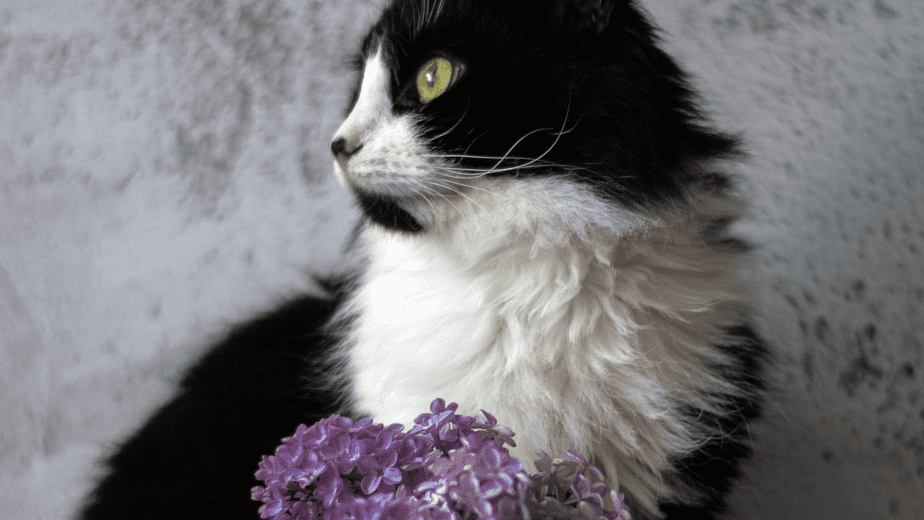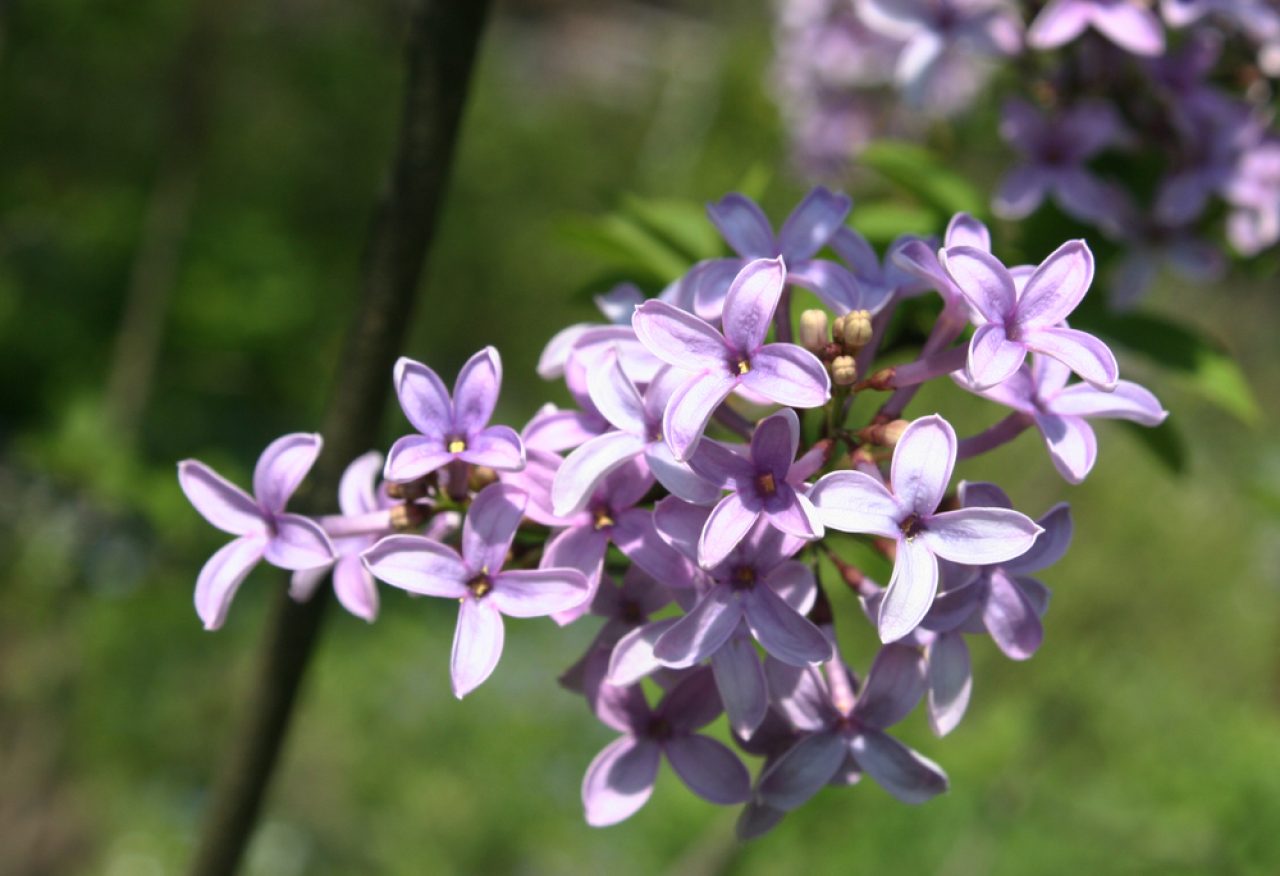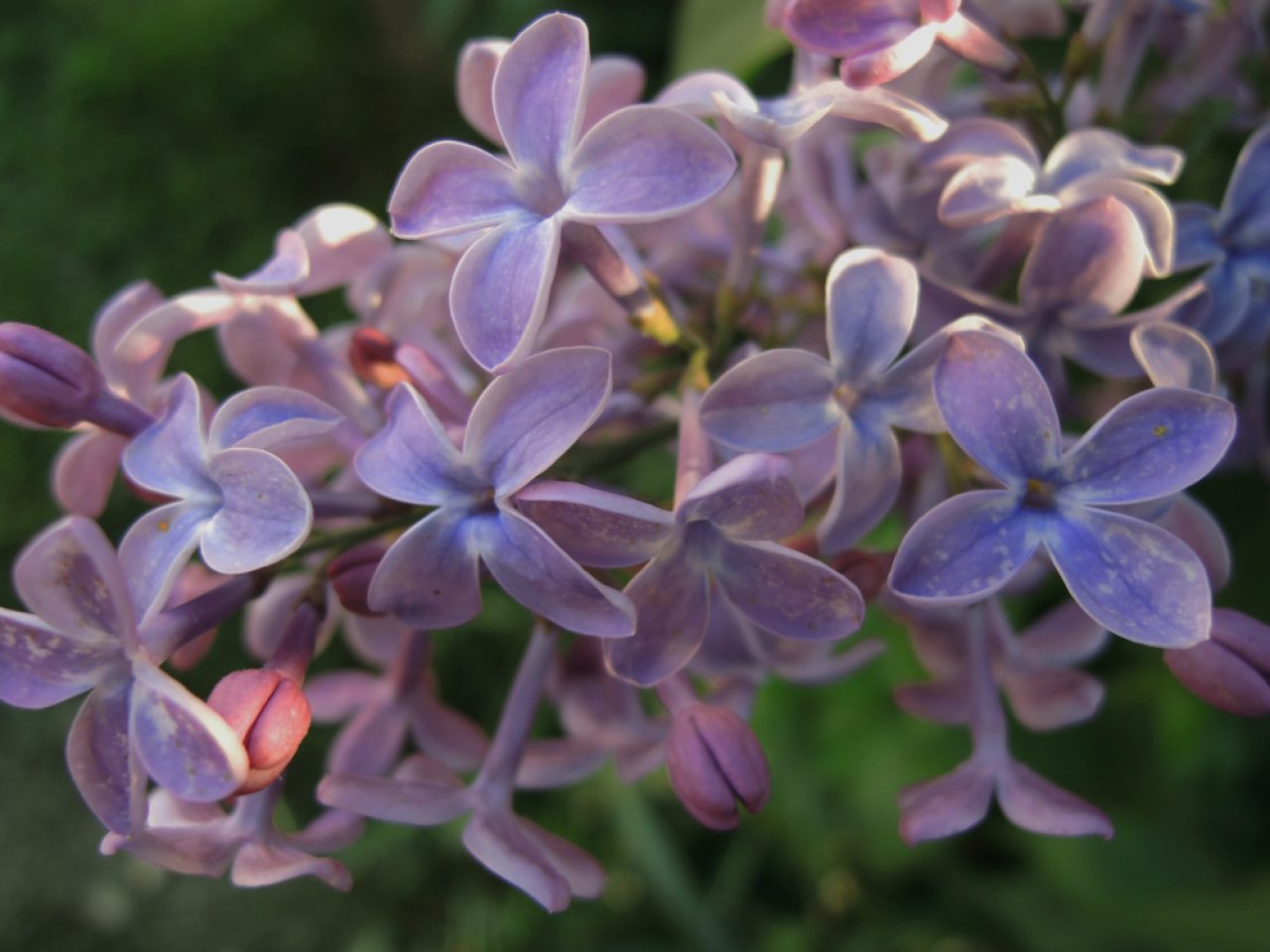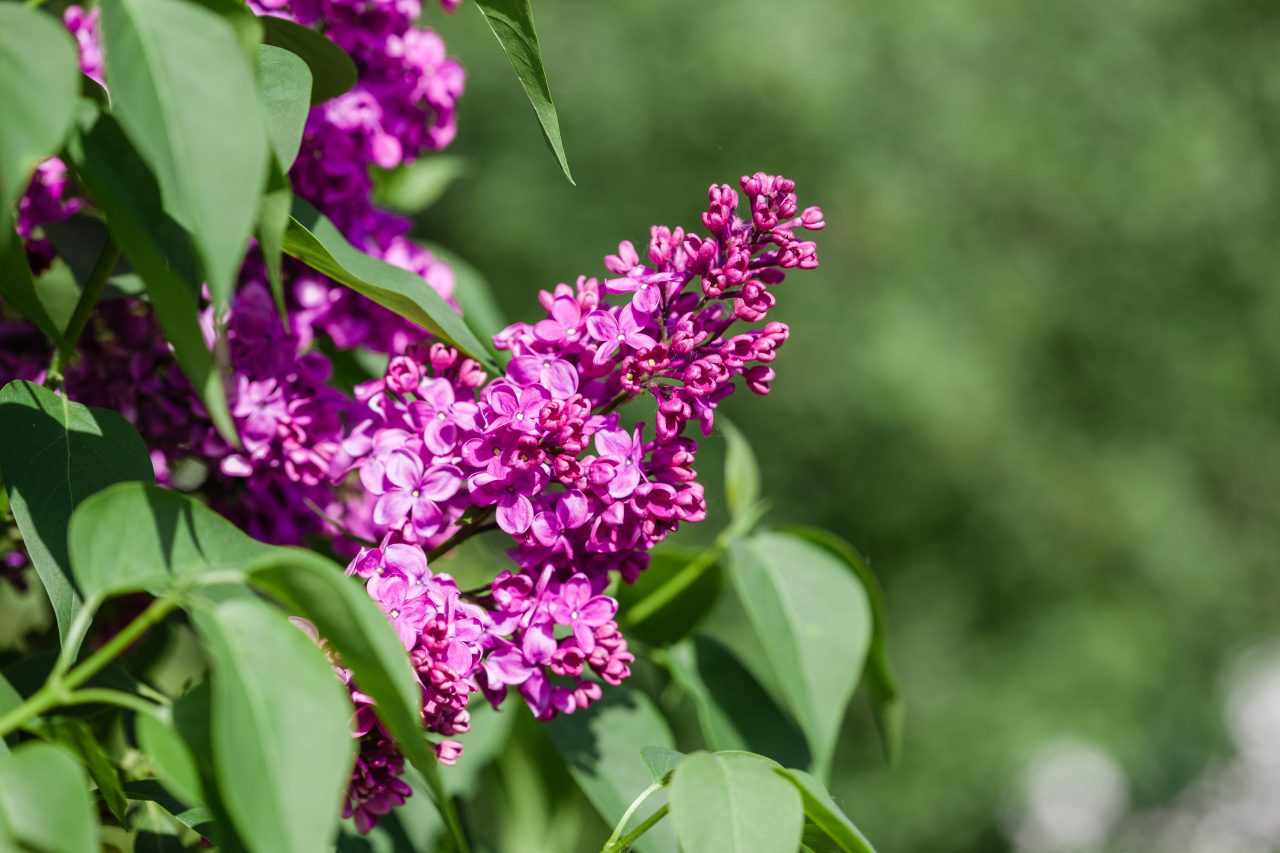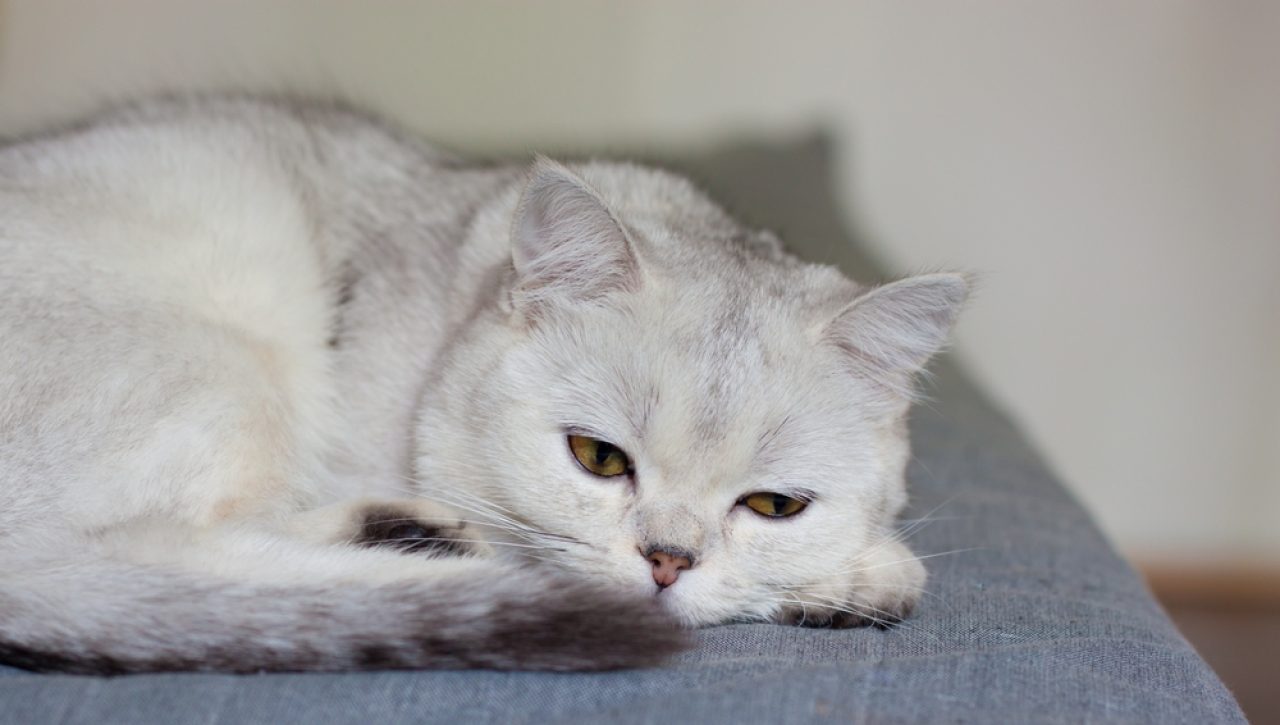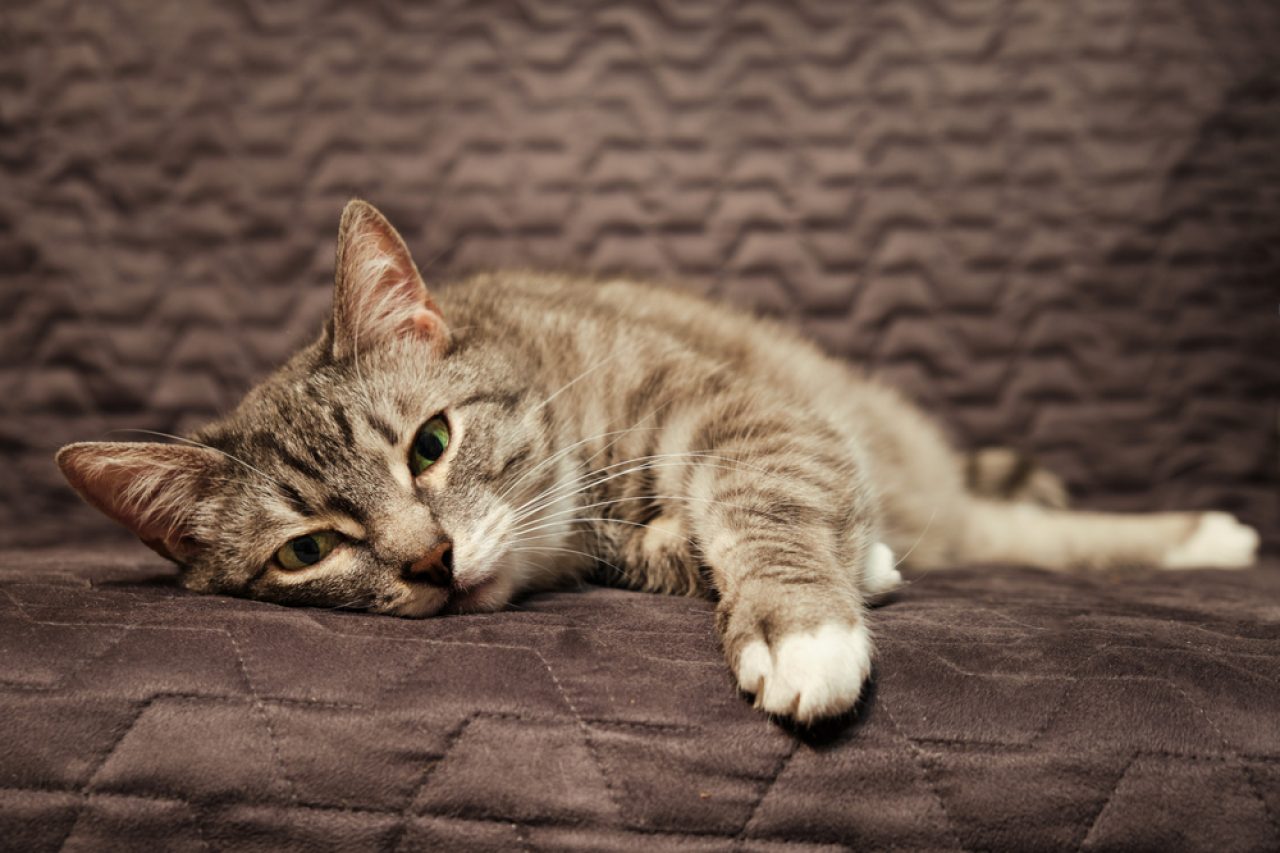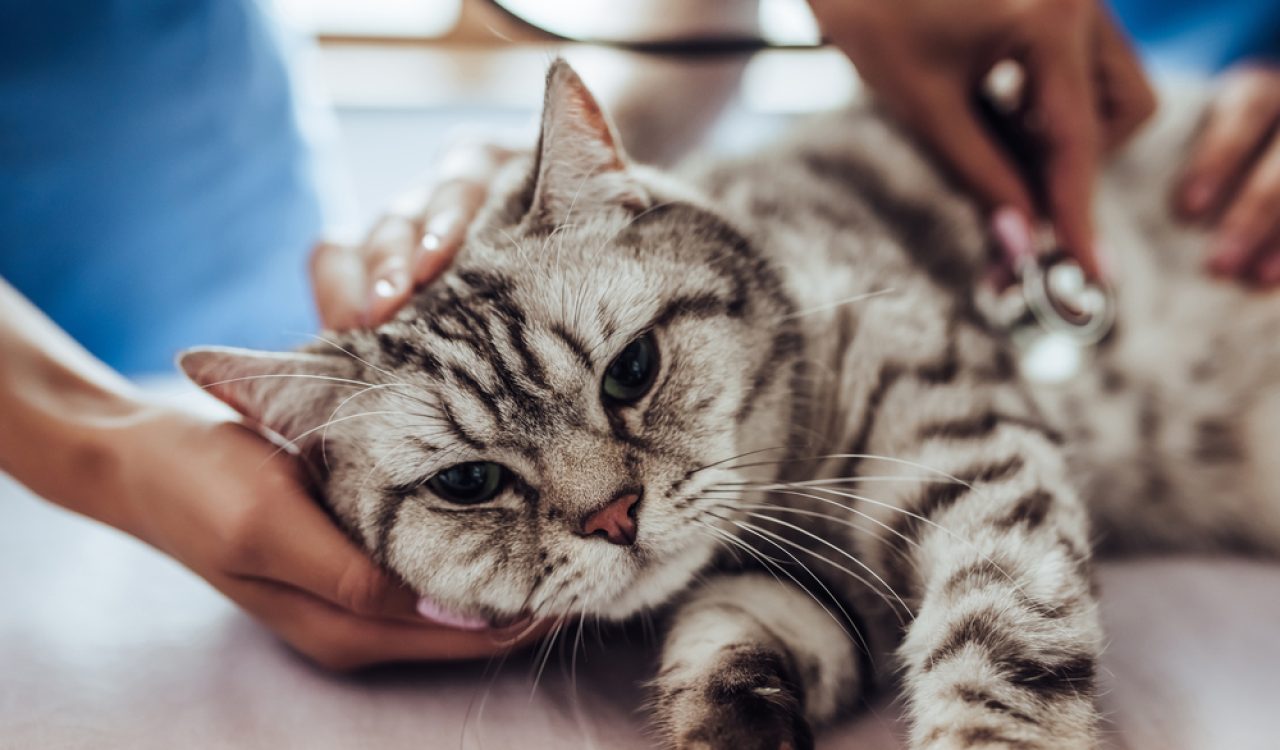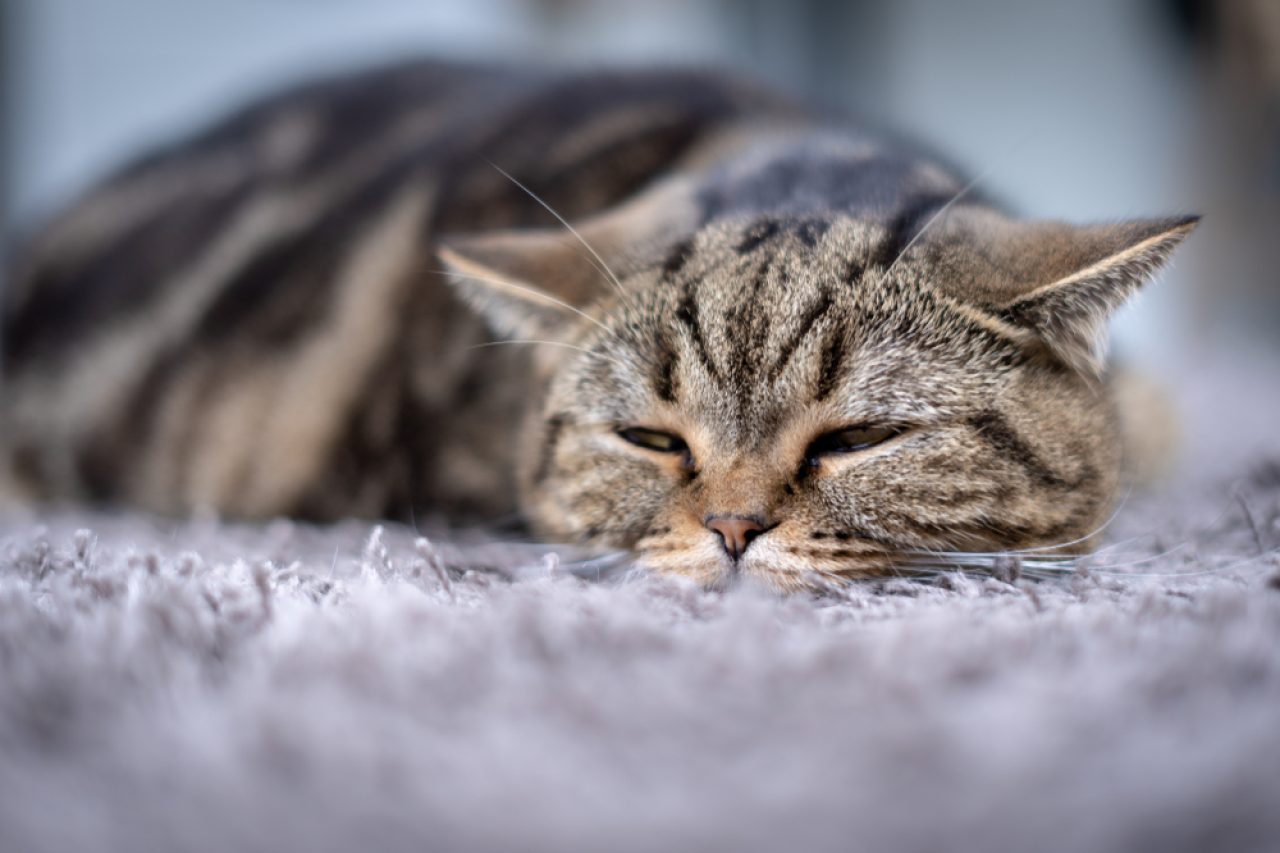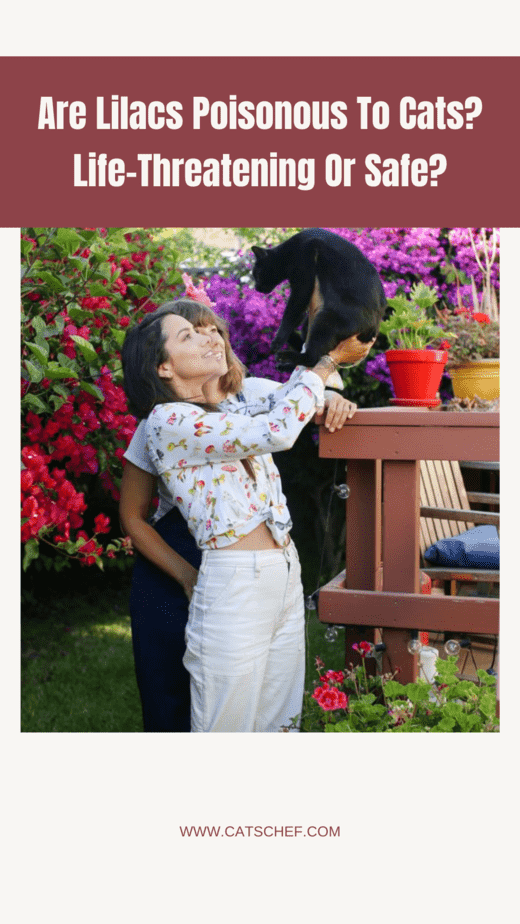📖 Table of Content:
- Are lilacs poisonous to cats?
- Poisonous lilacs
- Which parts of lilac are poisonous to cats?
- Symptoms of lilac poisoning
- What to do if your cat is showing symptoms
- Should I try to induce vomiting?
- Why are cats drawn to lilacs?
- Can lilacs be lethal to cats?
- Is the scent of lilacs toxic to cats?
- Are lilacs poisonous to other pets, too?
- What to do if you have lilacs
Has your feline been snooping around your flowers too much? Whenever we see our pets getting too close to plants, we worry that they might be toxic. It is a reasonable concern when we remember how much our furballs love munching on them. But are lilacs poisonous to cats?
They’re a fairly common flower in many households. As a cat parent, you need to know what plants are safe to have and which you should avoid.
Much like babies, felines also love exploring the world around them by biting and chewing on things. So, it’s only a matter of time until your pretty lilacs become their next target.
It’s often not enough to simply watch over your furball so she doesn’t get into trouble. Cats are like fuzzy ninjas that could snatch your flowers the moment you turn around.
For that reason, it’s best to know which plants are toxic and which are safe. By getting rid of the poisonous ones, we ensure that nothing bad can happen to our furballs. So, let’s find out if lilacs are kitty friendly.
Are lilacs poisonous to cats?
First of all, it’s important to remember that there are different types of this flower. For the most part, these plants are entirely non-toxic. Some kinds even have edible blooms. However, there are some that can be harmful.
Regardless of which type it is though, your feline probably shouldn’t be eating it. Lilacs aren’t a part of a cat’s regular diet, so any kind of change can upset the stomach. They aren’t harmful enough to cause any serious damage, so if she does sneak a small bite, she should be fine.
Poisonous lilacs
Cats shouldn’t be eating any type of lilac, but some can cause much bigger issues than others. Knowing what the different species are will help you keep your house or garden as kitty-safe as possible. If you already own any of these, you might want to consider replacing them.
1. Persian lilac
Persian lilacs are a bit smaller than the common ones. They normally reach a height of around 8 feet, and their blooms tend to be significantly smaller. They’re pale and very fragrant. Other common names for this species are white cedar and chinaberry tree.
Their seeds contain toxins Melia A and B which can have a very negative effect on cats. Once ingested, even a small amount can create problems. Some of the symptoms of poisoning are diarrhea, vomiting, muscle spasms, and drooling.
2. French lilacs
If you love rarities, chances are you own a French lilac. They’re the rarest type and they bloom only for a few weeks! They also come in several different hues such as blue, white, pink, and purple. And just like the Persian, your cat shouldn’t ingest it under any circumstances.
They contain a neurotoxic and hypotensive substance called galegine which can have serious effects on your feline. Sometimes even worse than those of the Persian lilac. Some include hydrothorax, and pulmonary edema, which can sometimes prove to be lethal.
3. Common lilac
This is the most common type of lilac and the one that most people know of. They share their color with their name, and they can grow up to 20 feet in length. They really make the Persian pale in comparison when it comes to height.
The common lilac, or Syringa vulgaris, is very fragrant, making it a must-have among plant lovers. They are slightly toxic, but not to the same extent as the French and Persian one. If you’re fixed on having one, you might as well go with the lesser evil.
Which parts of lilac are poisonous to cats?
We’ve mentioned that some lilacs are edible, but what parts exactly? Not all pieces have the same chemical structure, regardless of the fact that they’re part of the same plant. So, which ones are safe for your cat to eat, and which should she avoid?
1. Stems
While the toxicity depends on the type, no type of lilac stem should be consumed. All of them are at least slightly poisonous. They can cause symptoms that vary in severity, and they carry a potential risk of your cat choking because it’s firmer than the flowers.
2. Leaves
The toxicity again depends on the type of lilac you own. But, if you have a Persian or French lilac, you might want to be especially careful with the leaves. Most of the toxic chemicals are usually in the leaves of the plant. They can cause diarrhea, vomiting, lethargy, and more.
So just to be safe, you better leaf them alone.
Symptoms of lilac poisoning
The severity of your cat’s symptoms will depend on a few factors. Now that we know that there are lilacs poisonous to cats, we also need to take your feline into consideration. Not all furballs have the same resistance and they all react differently.
While some only get minor digestive issues, others might develop more severe symptoms. And those symptoms can sometimes even be lethal. That’s why it’s important to make sure your cat gets immediate help. Reacting in time is key when it comes to this situation.
If your feline only displays a mild reaction to the plant, you still need to keep an eye on her. Even light symptoms can become more severe over time. When a lethal outcome is a possibility, you need to keep track of any developments. So, here are some of the most common signs of lilac poisoning.
1. Diarrhea and vomiting
At a first glance, these don’t seem like too big of a problem. After all, cats vomit and have diarrhea all the time thanks to their sensitive stomachs. However, if they’re caused by poisoning, these symptoms might become dangerous. It could very quickly lead to dehydration and exhaustion.
2. Loss of appetite and lethargy
Because the toxins affect your cat’s entire digestive system, loss of appetite may occur; and with it, a whole string of problems. Most commonly, lethargy. Her body will be tired from fighting off the poison, while not getting the right nutrients.
3. Excessive thirst
Excessive thirst will also very likely occur. It can either be a result of the body fighting off toxins or a result of dehydration from diarrhea and vomiting. Either way, you need to be sure to always have enough fresh water available for your furball.
4. Breathing difficulties and seizures
These are by far the most dangerous symptoms. They happen if the body didn’t manage to fight off the toxins. Poison has most likely spread through the blood system and got to other parts of your feline’s body.
From there it can easily affect your cat’s breathing or brain activity. This can lead to suffocation and other breathing difficulties, as well as seizures. The common lilac and other types are highly unlikely to cause such a severe reaction.
However, the French and Persian lilacs very much have that ability. So, to avoid mild symptoms turning into a total catastrophe, don’t wait around. Take your cat to the veterinarian the moment you notice unusual behavior so she can get professional assistance.
What to do if your cat is showing symptoms
If your cat is showing signs of lilac poisoning, the first thing you need to do is contact a vet. The sooner you react, the easier it will be to find the right treatment for your feline. While you’re waiting for medical help, there are some things you can do to aid her.
For example, it’s very helpful to always keep her water bowl filled with fresh water. Her body is losing a lot of liquid both to fight off the toxins and through vomiting and diarrhea. They can be so frequent that it’s difficult for her to keep up and stay hydrated, so the least you can do is keep her bowl full.
You should also try to make her rest as much as possible. Set up some blankets and keep her warm, so she doesn’t exhaust herself even more. I know you might be tempted to give her medications, but you should never give any medicine without consulting a vet.
The vomiting and diarrhea might seem scary and it’s natural to want to stop them. But that wouldn’t be of any help to your feline. Through vomiting and diarrhea, she’s getting rid of the poison much faster. So, just give her water, keep her calm and get professional help.
Should I try to induce vomiting?
One of the most common pieces of advice on how to help a poisoned cat is to induce vomiting. You’ll find a bunch of articles with step-by-step on how and why to do it. And it’s true that it can be very helpful when it comes to clearing out your feline’s body from toxins.
However, under no circumstances should you try to do it yourself at home. Trying to induce vomiting at home when you’re not properly trained can do more harm than good. That’s why it’s for the best to take your cat to a veterinarian, so a professional could do it safely.
Why are cats drawn to lilacs?
Now you know that there are lilacs poisonous to cats. But why are felines even drawn to them in the first place? Well, it all boils down to your furball’s nature and the scent of the flower. Cats love munching on plants whenever they get the chance, so it’s no surprise that they’re drawn to these blooms, too.
Another reason for the attraction could be the overwhelming scent. Lilacs are known to have a very fragrant smell that’s irresistible to both humans and felines. And since the flowers are for the most part edible, this wouldn’t normally be a problem.
Unfortunately, some lilacs are poisonous to cats, and even those that aren’t can be dangerous. A part of the stem or a leaf could get stuck in her throat and cause choking. So, to be safe and sure, it’s always best to keep your lilacs away from your furball.
Can lilacs be lethal to cats?
The lethality of a lilac depends on the type. French and Persian lilacs can cause such severe and dangerous symptoms that could easily be fatal. Thankfully, other types are, for the most part, safe. They can pose risks of choking, but it isn’t so common.
Still, that doesn’t make lilacs entirely safe for feline consumption. Above all, cats are carnivores with relatively sensitive digestive systems. Consuming anything that doesn’t fit their usual diet can upset their stomachs and cause digestive issues.
Even some of the milder problems like vomiting could cause bigger issues and complications. Sometimes they’re a sign of one! (Like pink vomit.) This happens if the symptoms are left untreated. That’s why you need to track her behavior and get her to the vet as soon as you notice anything strange.
Is the scent of lilacs toxic to cats?
We’ve already mentioned how luring the smell of these flowers is. But is their scent toxic, too? Can just owning a fragrant lilac be dangerous to our furballs?
Their scent is dangerous in only one way – it carries the possibility of attracting your cat toward it and tempting her to eat it. As for its toxicity itself, your furball is completely safe. Lilacs have a beautiful smell which is thankfully entirely okay to inhale.
Are lilacs poisonous to other pets, too?
Now that we know that some types of lilacs can be toxic to cats, what about other pets? For example, dogs or parrots. Do the toxins affect animals differently depending on the species? While the severity of symptoms varies depending on the animal’s size and immunity, they’re still affected by the toxins.
It’s still just as dangerous for them to consume lilacs as it is for cats. So, regardless of which pet you have, it’s a good idea to keep them away from these plants. Especially if you own a Persian or French lilac. (So, if you do have those, the safest option would be to throw them out.)
What to do if you have lilacs
If you have common lilacs, then there’s no need for you to get rid of them. They can only cause digestive issues, and your cat should be fine if she gets adequate care. So, just keep an eye on her and keep the plant somewhere she can’t reach.
It’s another story if you have a Persian or French lilac as these can be extremely dangerous for your feline. When ingested, they can sometimes even have lethal consequences. So, if you have either of these, the smartest thing to do is to throw them out or give them to someone else.
If you’ve already noticed signs of poisoning, it’s important not to panic. Give your furball plenty of water, keep her warm and comfortable and get medical help. The sooner you act on any behavioral changes, the better the chances are that your cat heals without complications.
Your veterinarian will know exactly what to do. Your only job is to listen to his instructions and follow them until your cat gets better. Acting on time and keeping a cool head are key! We hope this article managed to help you and that you can now create a safer environment for your feline.
Read more: Is Baby’s Breath Toxic To Cats? A Whiff Of Poison Or Not?
